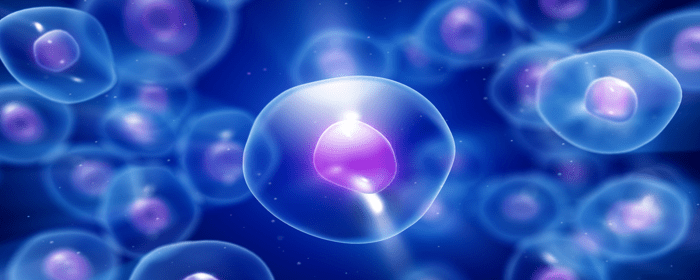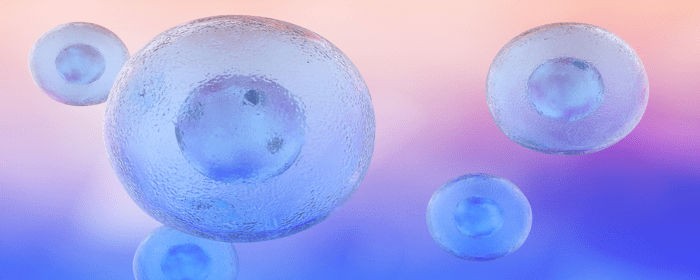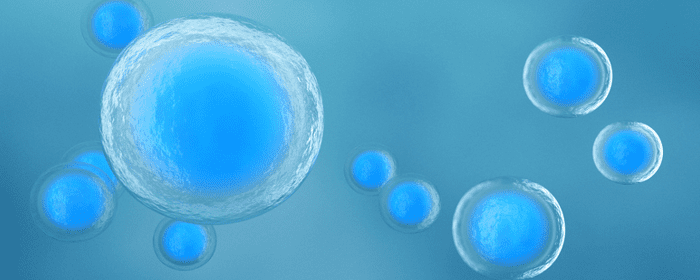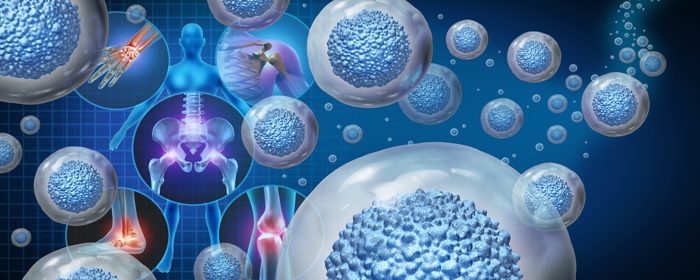
by admin | Feb 15, 2023 | Spinal Cord Injury, Mesenchymal Stem Cells, Stem Cell Research, Stem Cell Therapy
Spinal cord injury (SCI) often results in damage to the spinal cord or the nerves found within the spinal column. Currently estimated to affect over 17,000 new patients each year in the United States, with 81% of these patients being male, the most common causes of SCIs are motor vehicle accidents, falls, acts of violence, and sports/recreational activities.
Current SCI treatment methods are unable to support the regeneration of the spinal cord and often lead to permanent nerve damage that affects motor and sensory function. The nature of SCI injuries often leaves patients unable to function at pre-injury levels and results in significant impacts on issues related to physical, mental, and socioeconomic health.
As more is learned about the potential benefits of regenerative medicine in the regeneration and repair of damaged cells and tissue, mesenchymal stem cells (MSCs) have emerged as potential candidates for the therapy management of SCIs; primarily because of their ability to release bioactive factors, their antiapoptotic effects, ability to inhibit scaring, and their ability to produce angiogenic effects.
Fracaro et al.’s review provides information about the damage from primary and secondary events after SCI, traditional treatments, and results of pre-clinical and clinical trials examining the use of MSCs as an SCI-tissue regeneration strategy.
Before sustaining an SCI, a wide range of inflammatory cells – all except for microglia – are found in blood vessels and throughout the spinal cord. Upon injury, it is common to observe immediate neuronal and glial death at the site of the injury followed by the development of an inflammatory process in the vascular and medullary region; it is this secondary response that results in the deterioration of the spinal cord and a general worsening of the condition. In the weeks and months following injury, remaining neutrophils and lymphocytes are found in the intravascular region, inactivated microglia remain in white matter, and macrophages are found in gray matter.
Traditional SCI treatments have demonstrated an inability to completely regenerate nervous tissue. Most of these traditional treatment methods attempt to reduce side effects and protect injured nerve tissue. Commonly used SCI treatments frequently include decompression surgery to relieve pressure and reduce hypoxia and ischemia; intravenous application of methylprednisolone sodium succinate (MPSS) to inhibit lipid peroxidation; neuroprotective agents to reduce cell dysfunction and death; and electrostimulation as a way to inhibit inflammation and reduce secondary injuries.
Despite the different techniques mentioned above, cell-based therapy is the only promising treatment aimed at regeneration. Stromal cells, and specifically MSCs, have demonstrated the potential for self-regeneration, differentiation, and immunomodulation. Although research has yet to determine exactly how MSCs promote functional recovery after SCI, they are widely thought to work through secreting different factors and biomolecules. MSCs have also demonstrated the ability to reduce inflammation, which is a very common secondary event occurring after SCI trauma.
The authors conclude this review by pointing out that a better understanding of the regenerative effects of stromal cells in the nervous system is required in order for the future development of cell-based therapies for patients with SCI.
Source: “Mesenchymal stromal cells as a choice for spinal cord injury treatment.” https://www.oaepublish.com/neurosciences/article/view/3329.

by admin | Feb 4, 2023 | Stem Cell Therapy, Degenerative Disc Disease, Mesenchymal Stem Cells, Stem Cell Research
Currently, it’s estimated that over 40% of adults over the age of 40 have at least one degenerative disc in their vertebrae; by age 80, the percentage afflicted with this condition is estimated to be over 80%. Characterized by erosion of the rubber-like discs between each vertebra of the spine, degenerative disc degeneration often results in chronic and debilitating back and neck pain. The condition is commonly accompanied by prolonged numbness in the arms and legs and pain that tends to radiate downward through the lower back and buttocks.
Adding to the seriousness of degenerative disc disease is the fact that chronic back pain continues to be a significant public health issue and among the leading causes of lost days of work and one of the most widely reported symptoms contributing to a diminished quality of life. In fact, a study conducted by the University of Maryland Medical Center found that the total cost of back pain (when factoring in medical costs, lost days of work, and the condition’s impact on wages) amounts to a staggering $560 to $635 billion annually.
Historically, chronic cases of degenerative disc disease required surgery. Unfortunately, surgical treatment of this condition not only demonstrated an inability to completely correct the conditions but also produced additional biomechanical problems and accelerated degeneration of nearby discs and portions of the spine.
Considering this, researchers began to investigate the potential use of autologous and allogeneic mesenchymal stem cells (MSCs) as options for treating degenerative disc disease.
In this review, Noriega et al. provide follow-up findings as a result of their long-term randomized controlled trial using allogeneic bone marrow-derived MSCs. As part of this trial, participants in the treatment group received an intradiscal injection of healthy allogeneic bone marrow MSCs while those in the control group received sham infiltration in the paravertebral musculature.
Outcomes of this trial were followed and recorded for one year after injection and subsequently followed up on 3.5 years afterward as part of this review.
As part of the original study and in addition to confirming the feasibility and safety of degenerative disc treatment with injection of MSCs, Noriega et al. found that patients treated with MSCs demonstrated rapid and significant improvements in algo functional indices when compared to those in the control group.
Examining outcomes nearly 3.5 years after original interventions, the authors reported no serious adverse effects of the investigation for either the treatment or control group. Findings also indicated that the improvements in both pain relief and disability improvement continued to increase in those receiving MSC injections while control patients did not show any significant healing after 3.5 years of receiving the intervention.
Of particular interest, the authors noted that patients treated with MSCs showed two distinct patterns – one subpopulation that showed a significant response to this treatment (responders) and another subpopulation that demonstrated no significant difference from patients in the control group (non-responders).
Noriega et al. also reported that observed structural changes in those receiving MSC injections occurring after year one of treatment were maintained over the period of 3.5 years while those in the control group continued to show a decrease in grading used to measure results of the trial.
The authors conclude that these long-term outcomes support the use of MSCs as a valid alternative for managing degenerative disc disease. Findings indicate that MSC injection as a treatment for degenerative disc disease provides effective and durable pain relief and objective improvements in disc degeneration.
Source: “Treatment of Degenerative Disc Disease With Allogeneic … – PubMed.” 1 Feb. 2021, https://pubmed.ncbi.nlm.nih.gov/33492116/.

by admin | Jan 18, 2023 | Uncategorized
Worldwide, an estimated 10 million people suffer some form of traumatic brain injury (TBI) severe enough to result in either death or hospitalization each year. Nearly 20% of these TBIs occur in the United States and over 50,000 of those affected die as a result of their injury.
Characterized by a wide range of physical, psychological, and emotional impairments that range from mild memory and mood disorders to severe loss of body control and coma, TBIs are most often caused by a serious blow to the head or neck area[1].
Research has confirmed that the initial trauma resulting from the TBI is not the only factor causing damage to the brain. After sustaining an initial injury, the brain initiates a series of complex biochemical responses that significantly influence the overall severity of the damage caused as a result of the injury.
TBIs come with a tremendous cost, with direct and indirect costs estimated at over $60 billion per year in the United States alone. Additionally, there has been limited success in identifying therapeutic or pharmacological treatments that improve the long-term prognosis of moderate to severe TBI.
Considering the recent success of regenerative therapies in the treatment of a number of serious health conditions, researchers are optimistically exploring the potential benefits of using stem cells, specifically mesenchymal stem cells (MSCs), as a possible way to restore functionality to damaged neurons in and around the brain.
In this publication, Hasan et al. review numerous studies investigating the effects of the infusion of MSCs into animal models of TBIs and summarize the advances in the application of MSCs in the treatment of TBI. MSCs are multipotent stromal cells and are available for extraction from all tissue in the body.
Adding to the potential benefits offered by MSCs, they have been found to differentiate into a wide range of cell lines (not just mesenchymal cells) making them an easily accessible and potentially highly effective option for use in the regenerative treatment of TBIs.
In addition, MSCs have been observed selectively migrating and settling within injured tissue, which adds additional benefit for treatment within previously undeliverable or difficult-to-deliver sites such as the brain and the heart.
The growing evidence supporting the efficiency of using MSCs to alleviate the long-term and debilitating effects of TBI has been further bolstered by recent research highlighting the potential for the genetic modification of MSCs as a way to enhance the survival of stem and neuronal cells. Coupled with additional findings in human trials demonstrating that oxidative stress production can be manipulated by MSCs and therefore contribute to the brain’s recovery after injury, researchers are increasingly optimistic that MSC-based approaches offer significant benefits for the treatment of TBIs.
Hasan et al. also point out several concerns and potential challenges of using MSCs in the treatment of TBIs that need to be further explored and better understood before regular use in clinical settings can be approved. Among these concerns, the authors point out, is that a better understanding of the mechanisms of MSC homing in TBI-affected regions of the brain is important in order to employ them efficiently in clinical settings. Another area requiring further research is a better understanding of the respective roles of paracrine effects, transdifferentiated cells, and other factors related to tissue repair. The authors also identify a recent concern over the potential role of MSCs in the development of cancer and autoimmune diseases as a cause for further study of this potential treatment.
Despite the areas identified as in need of further research, the authors conclude that MSCs continues to demonstrate great potential in the field of regenerative medicine and specifically with respect to their use in the treatment of TBI.
Source: Mesenchymal Stem Cells in the Treatment of Traumatic Brain Injury.” 20 Feb. 2017, https://www.ncbi.nlm.nih.gov/pmc/articles/PMC5316525/.
[1] “Traumatic brain injury – Symptoms and causes – Mayo Clinic.” 4 Feb. 2021, https://www.mayoclinic.org/diseases-conditions/traumatic-brain-injury/symptoms-causes/syc-20378557.

by admin | Jan 5, 2023 | Mesenchymal Stem Cells, Diabetes, Regenerative Medicine, Stem Cell Research, Stem Cell Therapy, Umbilical Stem Cell, Wharton's Jelly
Mesenchymal stem cells (MSCs) are multipotent fibroblast-like cells found throughout the body and have been found to have self-renewing and multilinear therapeutic potential by providing new cells for tissue repair by replacing damaged cells.
Thought to stimulate repair and control the immune response through an expression of growth factors and other cytokines, MSCs are at low risk of rejection and repair tissue damage through immunomodulation, not by their ability to differentiate.
While MSCs can be isolated from a number of tissue sources, including bone marrow, peripheral blood, adipose (fat) tissue, umbilical cord blood, and umbilical cord tissue (Wharton’s jelly). MSCs derived from the human umbilical cords (UCMSCs) have been found to have significant advantages over MSCs isolated from other sources. These advantages include higher proliferation and self-renewal capacity and multilineage differentiation capability.
Unlike many sources of MSCs, the umbilical cord is considered medical waste, making the collection of UCMSCs noninvasive and eliminating ethical concerns associated with the collection of MSCs from other sources. These UCMSCs have been developed as effective “off-the-shelf” cell therapy for a number of conditions, including autoimmune diseases, and as a treatment for a number of emergency medical conditions.
This Phase 1 clinical study, designed and conducted by Chin et al., intended to determine the safety and efficacy of intravenous allogeneic infusion of UCMSCs in healthy volunteers and to determine the effective dose at which an immunomodulatory effect is observed. The findings of this study are intended to serve as a guideline and benchmark for future CVL-100 clinical research.
Analyzing the results of this clinical study, the authors report that there was no observed complication resulting from the infusion and no significant adverse event in either dosage group in the 6 months of follow-up. These findings led Chin et al. to conclude that UCMSCs infusion was safe among healthy subjects, results that were consistent with other UCMSC treatment-based studies.
The authors also reported that UCMSCs infusion posed no significant adverse effects in patients with type 2 diabetes. Despite the relatively small sample group of this study (11 subjects), the authors reported demonstrating an initial transient proinflammatory effect followed by a significant and prolonged anti-inflammatory effect.
In addition, Chin et al. report found that high-dose (HD) CLV-1000 infusion provided a significant increase in both hemoglobin level and MCV level that falls within the normal range. Biomarker assessment results also indicated that the HD group demonstrated a significant steady increase of cytokine IL-1RA from baseline up until 6 months of posttreatment. This finding is especially important as IL-1RA is a naturally occurring antagonist to the proinflammatory cytokine 1L-1.
The authors conclude that this study clearly demonstrates a difference in immunomodulatory effect between the high-dose and low-dose treatment groups, with the HD group demonstrating a significantly greater reduction of proinflammatory cytokine TNF-α and an increased level of specific anti-inflammatory cytokines within 6 months and in relation to those in the low dose group. Considering this, Chin et al. conclude that a CLV-100 dosage of two million MSCs per kilogram of body weight represents the optimal dose level for overcoming inflammatory conditions by displaying the best improvement in all parameters tested, absence of side effects, and SAEs.
The data collected in this study also suggests that this is the first study to report a significant reduction of globulin observed over the course of the study. This is important because globulin serves an important role in immunity. Additionally, increases in serum globulins are associated with several immune-mediated diseases, including rheumatoid arthritis, chronic liver disease, diabetes mellitus, and cancer.
Considering these findings, the authors of this study conclude that high doses of allogeneic MSCs could help exert beneficial effects of repair and healing.
Source: “High Dose of Intravenous Allogeneic Umbilical Cord-Derived ….” https://www.hindawi.com/journals/sci/2020/8877003/.

by admin | Dec 20, 2022 | Osteoarthritis, Mesenchymal Stem Cells, Stem Cell Research, Stem Cell Therapy
Osteoarthritis (OA) is the most common form of arthritis and affects an estimated 25% of adults in the United States. Characterized by pain, stiffness, and inflammation in the joints of the body, OA is most frequently observed in the knees, hands, hips, and spine.
OA is one of the leading causes of disability with an annual cost of medical care and lost earnings exceeding $300 billion. With over 250 million people affected by OA worldwide, the combination of aging, obesity, and increased incidents of oxidative stress is causing the condition to become increasingly prevalent.
To date, treatment and medical interventions – including exercise, physical therapy, lifestyle modifications, and prescription and over-the-counter medications – have been successful in managing symptoms, reducing pain, and maintaining joint mobility, but have not been able to promote the regeneration of degenerated tissue.
Stem cells, and specifically mesenchymal stem cells (MSCs), have been identified as a potential therapy option for OA. In this review, Zhu et al. summarize the pathogenesis and treatment of OA and review the current status of MSCs as a potential treatment option for the condition.
In reviewing the pathogenesis of OA, the authors highlighted the fact that OA is a dynamic and progressive degenerative disease that is primarily caused by the imbalance between restoration and destruction of the joints; the disease is also significantly influenced by environmental, inflammatory, and metabolic aspects.
The authors highlight that the primary goals of current OA treatment methods are to reduce pain, slow progression, and preserve and improve joint mobility and function.
As researchers continue to search for therapies that encourage the regeneration of damaged articular cartilage and the alleviation of inflammation, they’ve turned their attention to a number of stem cell-based therapies, such as autologous chondrocyte implantation (ACI). While ACI has received FDA approval, unexpected dedifferentiation, and joint invasiveness during harvest limit the availability and usefulness of this application.
Fortunately, MSCs have not been found to demonstrate limitations similar to those observed in ACI and are considered novel therapeutic agents for the treatment of OA. Prized primarily for their ability to stimulate cartilage formation and for their vascularization, anti-inflammation, and immunoregulation, MSCs are sourced from different types of stem cells, including bone marrow (BM-MSCs), adipose tissue (AD-MSCs), and umbilical cord (UC-MSCs). Zhu et al. summarize the characteristics, advantages, and disadvantages of each of these MSC sources in this review.
The authors point out that several clinical trials have proven both the safety and potential efficacy of BM-MSCs, AD-MSCs, and UC-MSCs in the treatment of OA. However, the authors also point out that several of these trials were conducted with limited samples, without rigorous controls, and with relatively short-term follow-up. Considering this, Zhu et al. call for additional clinical trials using larger samples, more rigorous controls, and additional long-term follow-up. In addition, the authors also call for additional considerations to further enhance the efficacy in clinical trials, including cell density, time and location for MSC transplantation, and pretreatment of MSCs by inflammatory cytokines.
The authors conclude that while stem cell-based therapy, and specifically MSCs, demonstrate great potential for the regeneration of new cartilage and strong immunoregulatory capacity, the identified limitations and risks of MSC-based therapy should be realized and treated carefully.
Despite the identified risks and limitations, MSC-based therapy for the treatment of OA might achieve better efficacy in regenerative medicine, especially when administered in combination with other treatment options.
Source: “Mesenchymal stem cells in osteoarthritis therapy: a review – NCBI.” 15 Feb. 2021, https://www.ncbi.nlm.nih.gov/pmc/articles/PMC7868850/.






 St. Petersburg, Florida
St. Petersburg, Florida
